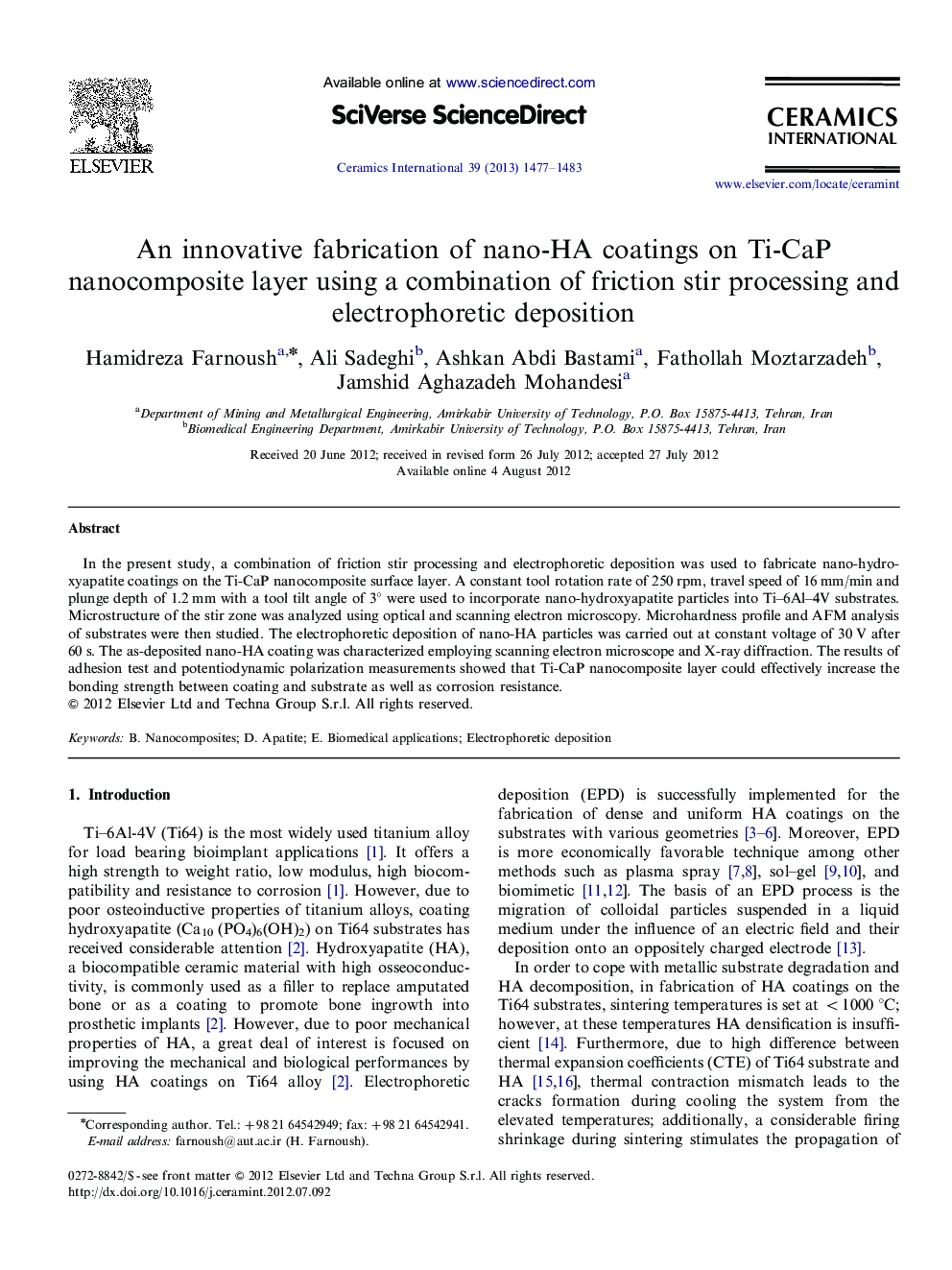| Article ID | Journal | Published Year | Pages | File Type |
|---|---|---|---|---|
| 1462193 | Ceramics International | 2013 | 7 Pages |
In the present study, a combination of friction stir processing and electrophoretic deposition was used to fabricate nano-hydroxyapatite coatings on the Ti-CaP nanocomposite surface layer. A constant tool rotation rate of 250 rpm, travel speed of 16 mm/min and plunge depth of 1.2 mm with a tool tilt angle of 3° were used to incorporate nano-hydroxyapatite particles into Ti–6Al–4V substrates. Microstructure of the stir zone was analyzed using optical and scanning electron microscopy. Microhardness profile and AFM analysis of substrates were then studied. The electrophoretic deposition of nano-HA particles was carried out at constant voltage of 30 V after 60 s. The as-deposited nano-HA coating was characterized employing scanning electron microscope and X-ray diffraction. The results of adhesion test and potentiodynamic polarization measurements showed that Ti-CaP nanocomposite layer could effectively increase the bonding strength between coating and substrate as well as corrosion resistance.
